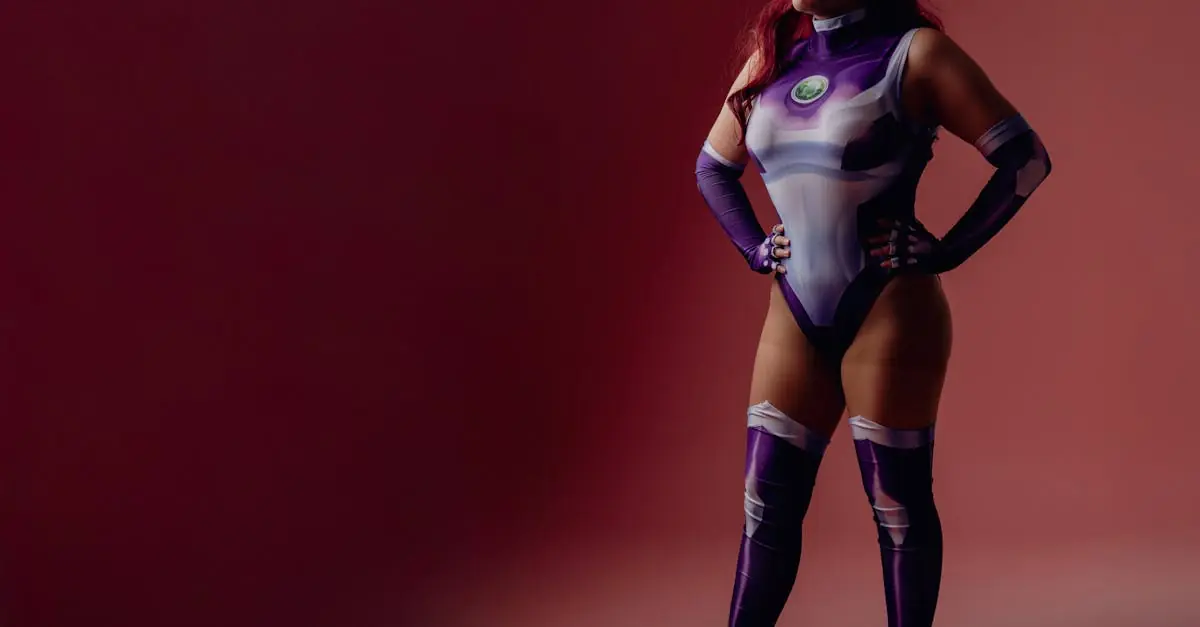Pop culture isn’t just a fleeting trend; it’s a vibrant tapestry that shapes society. From viral TikTok dances to blockbuster movies, it reflects what people love, laugh about, and sometimes even argue over. In a world where memes spread faster than a cat video, understanding pop culture is essential for anyone wanting to stay in the loop.
Table of Contents
ToggleWhat Is Culture Pop?
Culture pop represents a vibrant mix of trends, ideas, and expressions that shape the collective experience of society. This phenomenon includes various aspects like music, art, fashion, and technology, which resonate with the public’s tastes and attitudes.
Definition and Overview
Culture pop, often referred to as popular culture, encompasses the shared practices, beliefs, and media that dominate mainstream society. It manifests through various channels such as television shows, music genres, and social media platforms. Engaging with culture pop allows individuals to connect with peers and influencers, making its understanding crucial in contemporary society. With the rise of digital communication, culture pop evolves rapidly, reflecting current events and youth preferences. It serves as a mirror to societal values and shifts, providing insights into what matters to communities at any given time.
Historical Context
The roots of culture pop trace back to the early 20th century, gaining momentum during post-war social changes. In the 1950s and 1960s, television and rock ‘n’ roll played pivotal roles in shaping this culture, influencing youth and driving trends. Simultaneously, movements like counterculture emerged, challenging norms and redefining mainstream tastes. By the late 20th century, the internet revolutionized how cultural products spread, introducing phenomena like memes and viral videos. This evolution transformed how society interacts with culture pop, making it a vital element of modern life that continues to evolve.
Key Elements of Culture Pop
Pop culture encompasses various elements that shape collective identity. These elements resonate with people, reflecting shared interests and contemporary issues.
Music and Entertainment
Music and entertainment drive pop culture’s vitality. Genres like hip-hop and pop dominate charts, engaging diverse audiences. Iconic artists such as Billie Eilish and BTS capture global attention through innovative music and memorable performances. Film franchises, including the Marvel Cinematic Universe, generate massive fan bases and influence cultural conversations. Streaming platforms like Netflix shape entertainment consumption trends, ensuring accessibility to popular shows and movies. Live events such as concerts and festivals create communal experiences, further solidifying connections among fans.
Fashion Trends
Fashion trends emerge as vital aspects of pop culture. Streetwear brands like Supreme and Off-White gain popularity, shaping everyday style for many. Designer collaborations with celebrities generate buzz and establish new benchmarks in fashion. Seasonal events, like New York Fashion Week, showcase evolving styles and ideas, highlighting artistic expressions. Sustainable fashion initiatives resonate with socially conscious consumers, influencing purchasing decisions. Influencers on social media platforms introduce trends, accelerating their spread across demographic boundaries.
The Impact of Social Media on Culture Pop
Social media significantly reshapes pop culture by facilitating communication and influence. It allows trends to emerge rapidly and transforms the way communities interact.
Platforms and Influencers
Various platforms play crucial roles in shaping what’s popular. TikTok, Instagram, and Twitter serve as arenas where content creators thrive. They connect directly with their audiences, fostering relationships that amplify messages. Influencers act as cultural brokers, driving trends and establishing norms. For instance, large followings on these platforms can transform a simple product recommendation into a viral phenomenon. Their ability to engage followers creates a feedback loop, influencing everything from fashion choices to music tastes. Moreover, the accessibility of live streaming offers real-time engagement and connection, further solidifying the presence of influencers in pop culture.
Virality and Trends
Viral content often defines contemporary pop culture dynamics. Memes, challenges, and catchy songs circulate at astonishing speeds, reaching global audiences. Videos that capture attention within seconds become integral to collective experiences. This rapid pace heightens competition among creators striving for virality. Successful trends often reflect societal values or current events, resonating with audiences. TikTok dances or hashtag challenges serve as examples of how quickly trends can take shape. Additionally, social media marketing strategies leverage this virality, enabling brands to tap into cultural moments. Reacting to trends can solidify a brand’s image and appeal, aligning it with the zeitgeist of pop culture.
The Global Influence of Culture Pop
Culture pop creates a global dialogue that transcends borders. Its impact results from dynamic exchanges among diverse communities.
Cross-Cultural Exchanges
Cross-cultural exchanges define how trends migrate across regions. Multimedia platforms, such as YouTube and TikTok, facilitate the sharing of cultural elements. Dance, music, and fashion spread rapidly, blending different influences. For instance, K-pop has gained international acclaim, prompting adaptations in local music scenes. Artists often collaborate, merging styles to create new genres. These interactions foster understanding and appreciation among audiences, enriching the cultural landscape. As people engage with varied expressions, they reshape their identities and perspectives.
Mainstream vs. Subculture
Mainstream and subculture dynamics illustrate the diversity within pop culture. Mainstream phenomena appeal to broad audiences, while subcultures cater to niche interests. Iconic films or chart-topping hits dominate conversations, showcasing shared experiences. In contrast, subcultures emerge around specific genres, like punk or indie, often resisting mainstream norms. Popular television series often reflect both spheres, introducing elements that resonate widely while also embracing unique narratives. Subcultures maintain their identity through distinctive aesthetics, music, and values, asserting their place within the larger cultural framework. Each influences the other, creating a vibrant tapestry of cultural expressions.
The Future of Culture Pop
The future of culture pop remains vibrant and ever-evolving. Various emerging trends are set to redefine how societies engage with pop culture.
Emerging Trends
Augmented reality experiences are rapidly integrating into entertainment, enhancing the way audiences interact with music and films. Digital collectibles, like NFTs, gain traction, creating new paradigms for ownership and artistic expression. Sustainability continues influencing fashion, with eco-friendly brands attracting conscious consumers. Streaming services are expanding into live events, offering audiences immersive experiences beyond traditional viewing. TikTok trends show no signs of slowing, with short-form content shaping marketing strategies for brands. The resurgence of nostalgia influences media production, prompting reboots and remakes that revitalizing classic properties.
Predictions and Speculations
Experts anticipate a significant shift towards more interactive and personalized pop culture experiences. Increased integration of artificial intelligence may provide tailored content recommendations, enhancing user engagement. The longevity of genres like K-pop suggests a continued global blending of musical influences, fostering cross-cultural collaboration. Changes in consumer behavior indicate greater demand for diversity within narratives, leading to richer storytelling in mainstream media. Future social media platforms may emerge, altering how trends propagate and influence audiences. These developments point towards a more inclusive and interconnected cultural landscape.
Pop culture continues to evolve as a powerful reflection of societal values and collective experiences. Its dynamic nature fosters connections among individuals and communities while driving trends across various mediums. As technology advances and new platforms emerge, the ways people engage with pop culture will only grow more intricate and personalized.
The interplay between mainstream and subcultures enriches the cultural landscape, ensuring that diverse voices and perspectives are represented. Looking ahead, the future of pop culture holds exciting possibilities, with innovations promising to reshape how trends are created and consumed. Embracing these changes will help individuals stay relevant and connected in an ever-shifting cultural environment.



